While shopping around for speakers, you’ve probably come across the terms ‘2-way’ and ‘3-way’. You may have even found 4-way or 5-way speakers cropping up, although these are much less common.
This article will focus on the more popular 2-way and 3-way speaker types; we’ll explain what they are, how they differ, and which one is better for you. Let’s jump straight into it, shall we? Here’s a quick overview of 2-way vs. 3-way speakers…
In a Hurry?
| 2-Way | 3-Way | |
|---|---|---|
| Number of crossover points | 2 | 3 |
| Driver types | High frequency driver (HF), Low frequency driver (LF) | High frequency driver (HF), Mid frequency driver (MF), Low frequency driver (LF) |
| Frequency range | Tends to be more limited | Tends to be broader with more bass extension |
| Price | Generally lower | Generally higher |
| Power | More power efficient than 3-ways | Less efficient than 2-ways |
| Recommendations | Wharfedale Diamond 9.1 DALI Oberon 1 Bowers & Wilkins 607 S3 | KEF R3 Meta Wharfedale Evo 4.4 Bowers & Wilkins 603 S3 |
What Are 2-Way and 3-Way Speakers?
It is a common misconception that the terms ‘2-way speaker’ and ‘3-way speaker’ refer to the number of drive units within each speaker. This is not the case. Rather, these terms refer to how many times the full frequency band is split by the crossover. This is why you can have 3-way speakers that include more than three drive units.
2-Way Speakers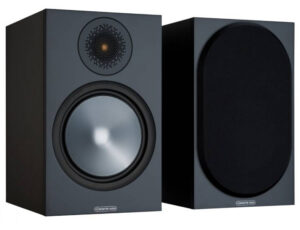
The term, ‘2-way speaker’, refers to speakers that divide audio signals into two separate frequency bands using a crossover. These two bands are then shared between two types of drivers. These drivers – typically called tweeters and woofers – deal with high and mid/low frequencies respectively.
In a 2-way speaker, the audio frequency range is divided into two parts: one for each driver type. The separation of these frequencies is controlled by the ‘crossover’, a system which supplies each driver with only the frequencies it has been designed to handle.
3-Way Speakers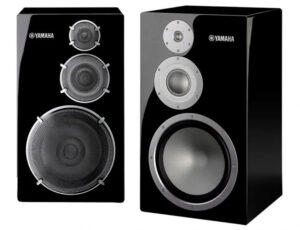
The term ‘3-way speaker’ applies to those speakers where audio signals are divided into three separate frequency bands. This is then directed through three types of drivers – typically called tweeters, midrange drivers, and woofers – which deal with high, mid, and low frequencies respectively.
In a 3-way speaker, the crossover system divides the unfiltered audio into three parts, meaning it is more complex, and generally more accurate than a 2-way speaker.
2-Way vs. 3-Way Speakers
With introductions out of the way, let’s delve into the main differences between 2-way and 3-way speakers.
Number of Crossovers
First and foremost, the biggest difference between 2-way and 3-way speakers is the number of ways the crossover system splits the audio. This is what determines the number of driver types.
Notice I’m saying driver types, rather than just drivers. This is because the number of crossovers does not necessarily equal the number of drivers. While 2-way speakers usually have two drivers, and 3-way speakers usually have three drivers, they can have more.
Take the Wharfedale Evo 4.4 as an example; this is a 3-way speaker that has four drivers. In this scenario, the crossover system still divides the audio up into high, mid, and low frequencies, it just has two woofers to distribute the low frequencies between.
You’ll also come across 2.5-way speakers. These are very similar to 3-way speakers but not quite the same. They typically come with three drivers but lack a dedicated midrange driver. The midrange role is fulfilled by a mid-woofer which fulfills both mid and bass roles. With bass duties being shared across two drivers, you can expect a fuller, more detailed low end from 2.5-way speakers compared to 2-way. Yet, they won’t have quite as much midrange detail compared to 3-way speakers.
An example of a 2.5-way speaker would be the Monitor Audio Bronze 500 Floorstanding Speaker; check them out.

Sound Quality
Just a friendly reminder before we delve into this next part: every speaker has its own unique sound. So, while the following information generally holds true, it might not necessarily apply to your personal set of speakers.
The sound quality that comes from speakers is influenced by numerous factors, among them: cabinet design, driver quality, and the sophistication of the crossover system. While an additional crossover and driver often suggest a more advanced design, this isn’t always the case. A poorly made, inexpensive pair of 3-way speakers could very well sound worse than a similar-priced pair of 2-way speakers. But let’s park the price discussion for a moment.
For a fair comparison, imagine two high-quality speakers, one 2-way and one 3-way. Generally speaking, the 3-way speaker is likely to deliver a fuller and more accurate sound. This is largely due to the extra crossover in the 3-way system, which gives more attention to the middle frequencies. 3-way speakers are also likely to have a better bass extension, furthering their accuracy.
The greater mid-range definition of 3-way speakers also leads to more clarity and nuance in vocal performances, in turn giving you a more realistic and holographic representation of the recording.
But it’s not all rosy. Sometimes, 3-way speakers can sound more disjointed, meaning the blending of different frequency types isn’t as smooth. It all depends on the quality of the crossover system. 2-way speakers, while generally not as full and natural sounding, can still provide excellent detail.
Power Efficiency
With fewer drivers to power, 2-way speakers tend to be more power-efficient than 3-way speakers. Consequently, 2-way speakers are often compatible with lower-powered amplifiers, something that could result in both financial savings and a reduction in carbon footprint.
The additional midrange driver in 3-way speakers demands more power to operate. For passive speakers or studio monitors, this may necessitate a beefier amplifier.
Price
If you’re on a low budget but want decent sound, 2-way speakers could be the better choice for you. They’re generally easier on the wallet and offer a great balance between cost and quality. Many people even prefer the sound of 2-way speakers, meaning you can find great 2-way speakers across a broad range of price points.
However, if you’re willing to dig a little deeper into your pockets, you should also consider 3-way speakers. With their more complex crossover system and typically larger build, they’re likely to come at a higher cost.
Remember, though, a top-notch pair of 2-way speakers will often outperform a cheap, low-quality set of 3-way speakers. So, if you’re budget-conscious, sticking with 2-way speakers can deliver more value for your money. Quality, after all, is key. Opting for 3-way speakers only makes sense if you’re prepared to spend enough to get a good pair.
Pros and Cons
| Pros | Cons | |
|---|---|---|
| 2-way | Power efficient | Smaller overall frequency range |
| More compatible with lower-power amplifiers | Less focus and definition | |
| Cost effective | Usually requires an additional subwoofer | |
| Readily available across a range of price points | ||
| 3-way | Greater bass extension | More expensive to buy and run |
| Better overall definition as more drivers share the workload | Limited choice of small-sized speakers | |
| Greater midrange detail | Requires a more powerful amp | |
| Reduced need for a subwoofer |

2-Way vs. 3-Way Speakers – Which is Better?
For Home Cinema
There are many factors to consider when selecting speakers for a home cinema, including room size, speaker quantity and configuration, active vs passive, etc. These will likely take priority over whether they’re 2- or 3-way.
Check out some more useful tips in our cinema room ideas article, a step-by-step guide to creating a dream home cinema.
For Hi-Fi or Studio
In a hi-fi or studio context, the decision surrounding 2-way vs. 3-way speakers largely depends on what genres you listen to and how much of an audiophile you are. For example, 2-way speakers are generally excellent for pop, rock, and other genres which aren’t typically super bass-heavy. But if you enjoy genres like R&B, drum and bass, or classical music, you’ll want a good pair of 3-way speakers for their greater bass definition.
Alternatively, 2-way speakers can be paired with a subwoofer to boost the bottom end.
Room Size
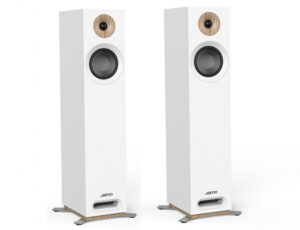 2-way speakers are usually smaller than 3-way speakers because they have fewer drivers and components inside.
2-way speakers are usually smaller than 3-way speakers because they have fewer drivers and components inside.
You’ll find most 2-way speakers are bookshelf speakers but you can also find 2-way satellite speakers, centre speakers, installation speakers, and the occasional floorstanding speaker.
An example of a 2-way floorstanding speaker is the Jamo S-805.
3-way speakers are typically found in floorstanding formats but there are notable 3-way bookshelf speakers too. You’ll also find 3-way centre speakers and some 3-way installation speakers.
In general, opt for 2-way speakers if you’re short on space or prefer an understated look.
On a Budget
If you’re on a budget, I’d recommend sticking with 2-way speakers as you’ll get more for your money. 3-way speakers are difficult to execute well cheaply so tend to be more expensive. There is an abundance of 2-way speakers available ready to fit your budget.
My 2-Way Speaker Recommendations
Wharfedale Diamond 9.1 Bookshelf Speakers
There’s a reason we rave about the Wharfedale Diamond 9.1 speakers, not only are they bestsellers but they’re also incredible value for money. If you’re on a budget, these 2-way bookshelf speakers will certainly not disappoint.
Like the Evo 4.2s, they feature a curved cabinet and support bi-wiring for cleaner separation of high and low frequencies (read our wiring speakers guide to get set up quickly and efficiently). You can hardly expect more of speakers at their low price point.
If these speakers interest you, you can find out more in our dedicated Wharfedale Diamond 9.1 review.
DALI OBERON 1 Bookshelf Speakers
The DALI Oberon 3s are 2-way bookshelf speakers with a woofer cone constructed of wood fibre! They have a great bass extension and full, smooth performance that’s easy to listen to overall.
If you’re worried about 2-way speakers not having enough low-end then these will ease your qualms if they’re within your budget.
Bowers & Wilkins 607 S3 Bookshelf Speakers
I’d also recommend the 607 S3 speakers from Bowers & Wilkins. These are 2-way speakers with a titanium dome tweeter for more refined, smooth high-frequencies, and a 5-inch continuum cone midrange/bass driver supported by a rear port.
They exemplify trickle-down technology with features such as the tweeter grille mesh brought in from the 800 series signature models.
My 3-Way Speaker Recommendations
KEF R3 Meta Bookshelf Speakers
The KEF R3 Metas are ideal if you want 3-way speakers in a compact bookshelf format with great colour choice.
The beloved Uni-Q driver array from KEF combines the tweeter and midrange driver in one; with the tweeter at the centre of the mid/bass cone. They’re also ideal if you’re after a modern and sleek aesthetic.
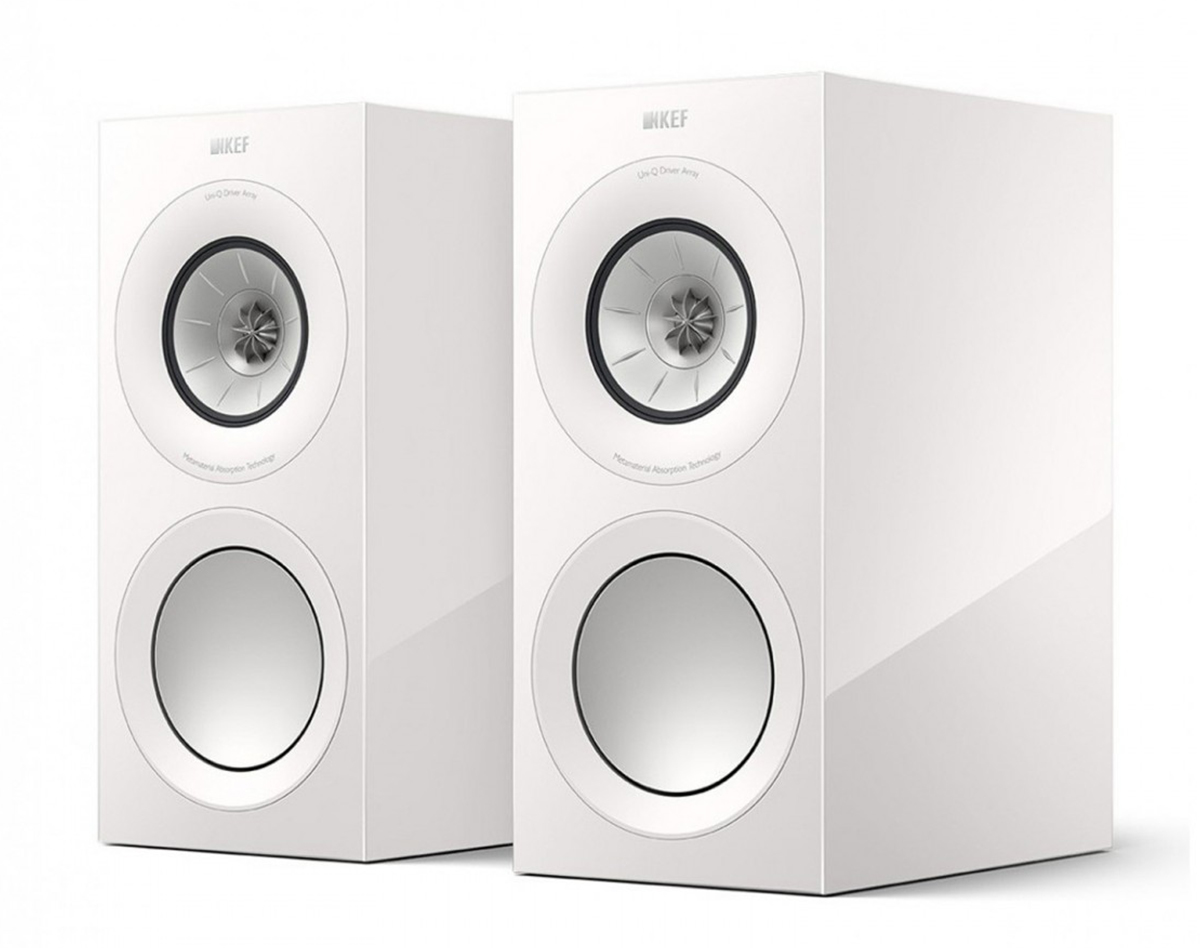
Wharfedale Evo 4.2 Speakers
The Wharfedale Evo 4.2 are another great option for a 3-way configuration in a smaller, bookshelf-sized speaker. These offer a more traditional look but still with the advanced technology you’d expect today.
They have a curved cabinet for the reduction of internal standing waves and despite their smaller size, still manage to fit in a slot-loaded profiled port (SLPP). This port supports lower distortion for deep, articulate bass that’s evenly dispersed through your room.
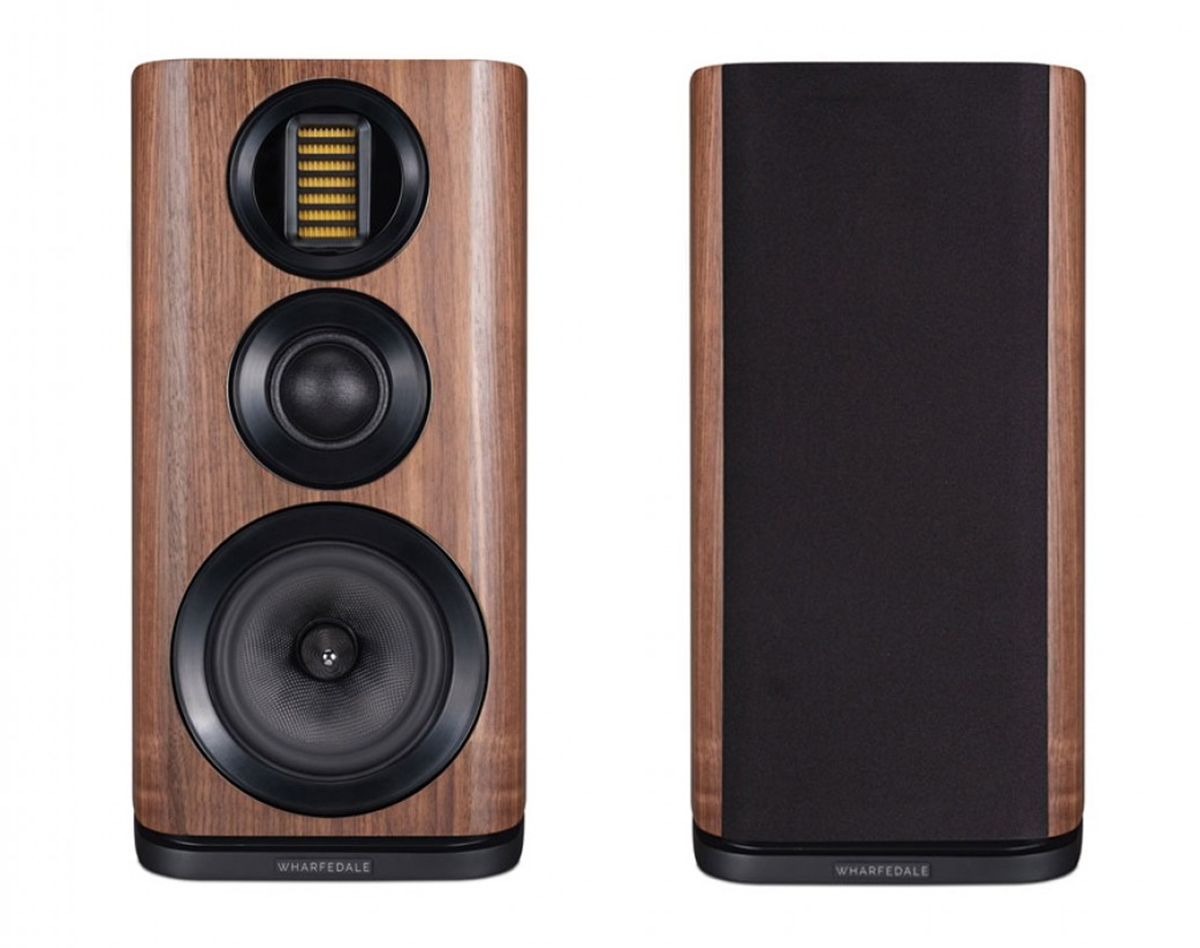
Triangle Borea BR08 Floorstanding Speakers
Now we come on to the floorstanding-sized 3-way speakers. The first I’d recommend is the BR08 from Triangle.
This speaker fits an EFS silk dome tweeter, midrange driver with a 100% natural cellulose paper membrane, two 16cm woofers, and a port all on its front face. Its drivers are fast and responsive for rhythm that’s precise and perfectly controlled.
It’s always down to personal preference but I especially love these in their Light Oak finish.
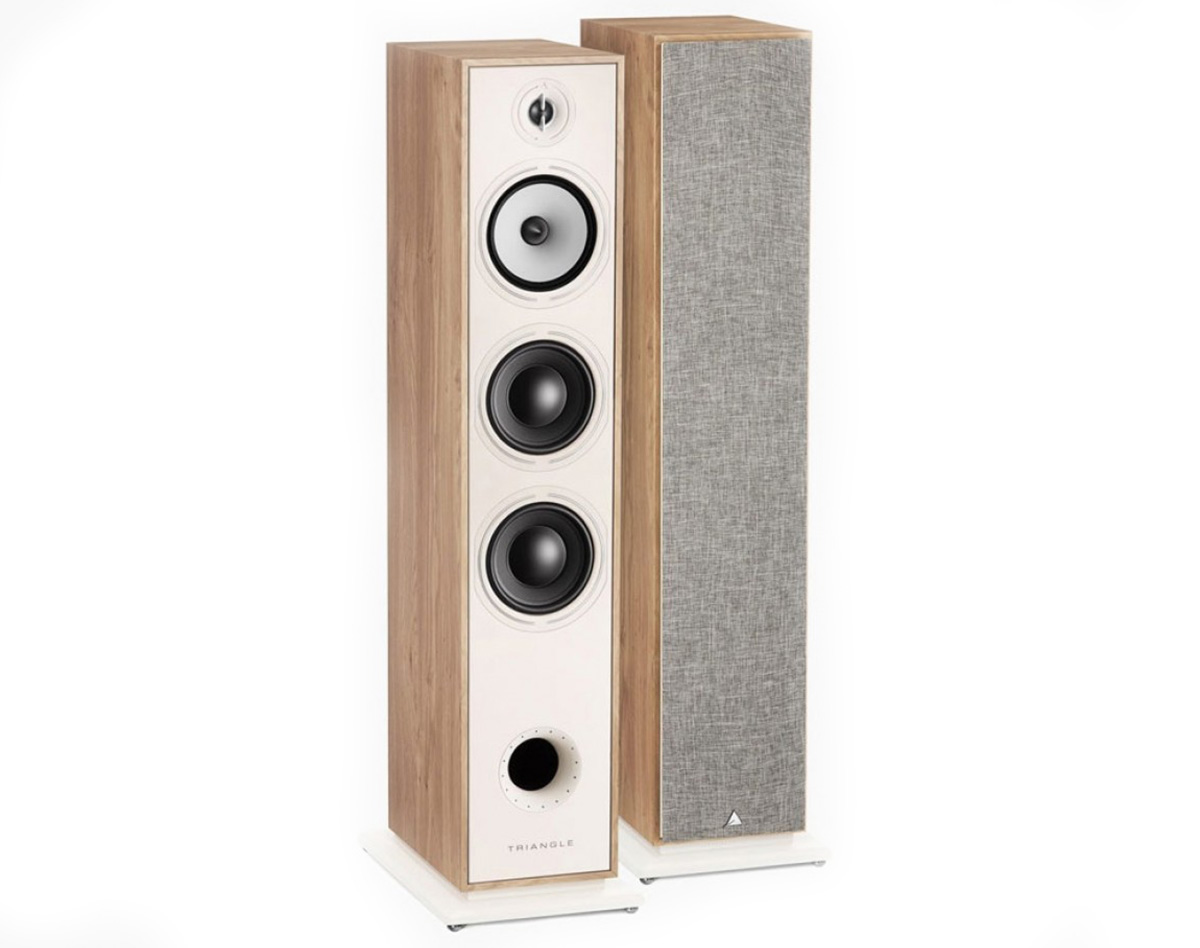
Wharfedale Evo 4.4 Floorstanding Speakers
The Wharfedale Evo 4.4 speakers are big! Both in terms of looks and sound. They reach almost subwoofer levels of bass so are completely satisfactory as a standalone stereo speaker system. In classic Wharfedale fashion, they pack tonnes in for the price.
We’ve gone into more detail about these speakers over in our Wharfedale Evo 4.4 Review; check that out for more on sound quality, key features, positioning and more!
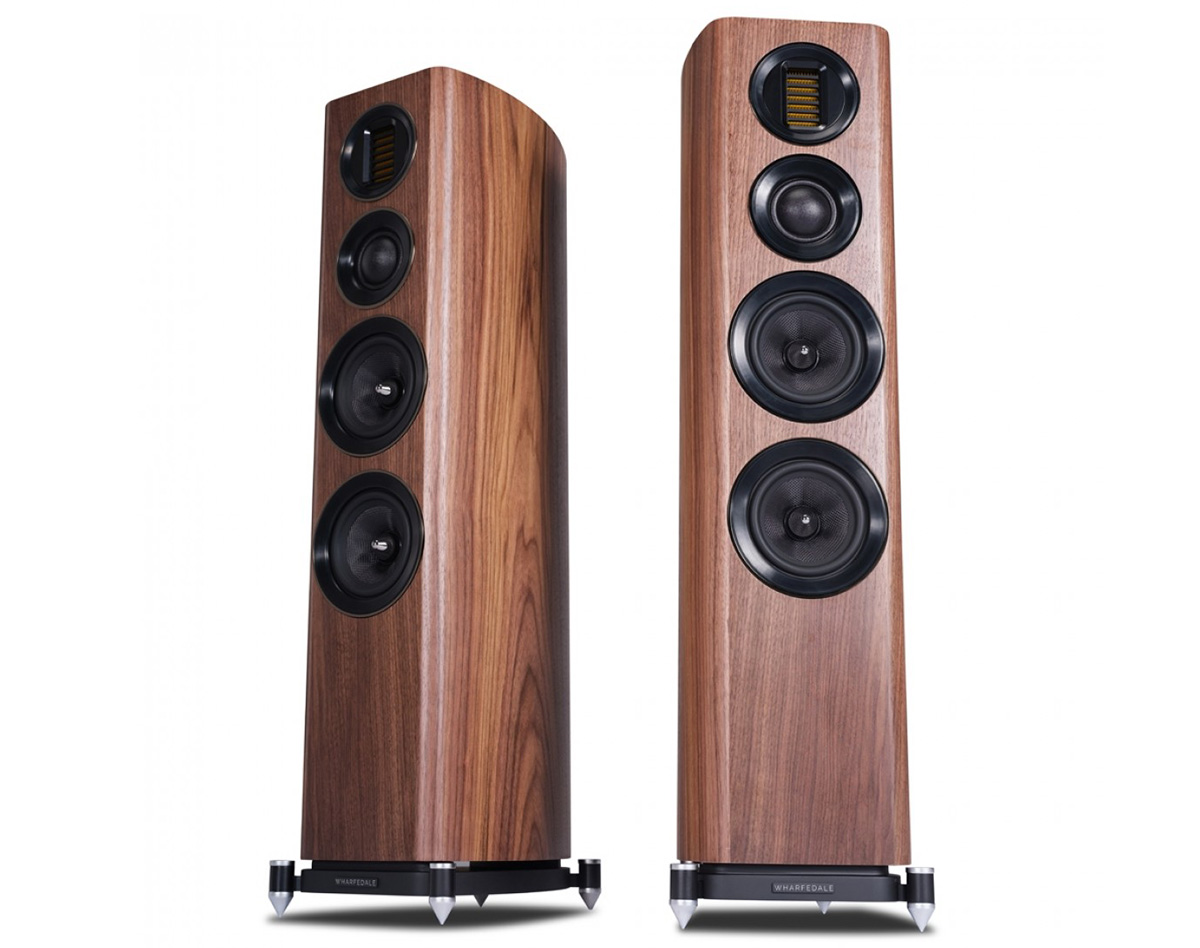
Bowers & Wilkins 603 S3 Floorstanding Speakers
The next 3-way speaker recommendation is the 603 S3 from Bowers & Wilkins. This is the largest of B&W’s 600 S3 range and, like the 607 S3 2-way speakers mentioned previously, features a titanium dome tweeter with grille mesh from the 800 series signature models.
An elongated tweeter tube loading system makes for an open, more spacious sound while an expanded tweeter diaphragm design has been taken from the 700 series.
It’s a great first foray into 3-way speakers thanks to all this trickle-down technology.

Coaxial Speakers
While browsing, you might encounter the term ‘coaxial speaker’. You’ll more commonly find these in recording studios and car audio installations, rather than hi-fi and home cinema systems. Nevertheless, here’s a definition in case you’re curious.
The word coaxial means ‘common axis’, so in speaker design this term is used for separate drivers which radiate sound from the same axis. KEF’s Uni-Q driver is an extension of this concept since it features a tweeter and midrange driver with the same centre.
The reason you’re more likely to encounter coaxial speakers in recording studios and professional monitoring systems is because they offer greater phase alignment. This allows engineers to hear the way certain frequencies interact with one another and mitigates any bias caused by phase issues.
FAQs
Which sounds better: 2-way or 3-way speakers?
The sound quality between 2-way and 3-way speakers largely depends on individual preferences and the specific audio setup. Some listeners prefer 3-way speakers for their broader frequency range, offering enhanced detail and richer, more nuanced sound reproduction. Others prefer 2-way because there’s less separation between frequency ranges.
What are the benefits of a 2-way speaker?
A 2-way speaker offers notable benefits such as a compact design, power efficiency, and cost-effectiveness. They are particularly favoured in environments where space is at a premium, like car audio systems or small rooms.
Do you need a subwoofer with 3-way speakers?
The need for a subwoofer with 3-way speakers depends on personal bass preferences. While 3-way speakers have a driver dedicated to low frequencies, a subwoofer can still enhance the depth and richness of these sounds, especially in larger rooms or for certain types of music or audio content.
Final Thoughts
Ultimately, you’ll know for sure whether you prefer 2-way or 3-way speakers by hearing them in person. Why not drop into one of our showrooms in Bacup, England or Mülheim an der Ruhr, Germany where we’ll be more than happy to audition some products for you.

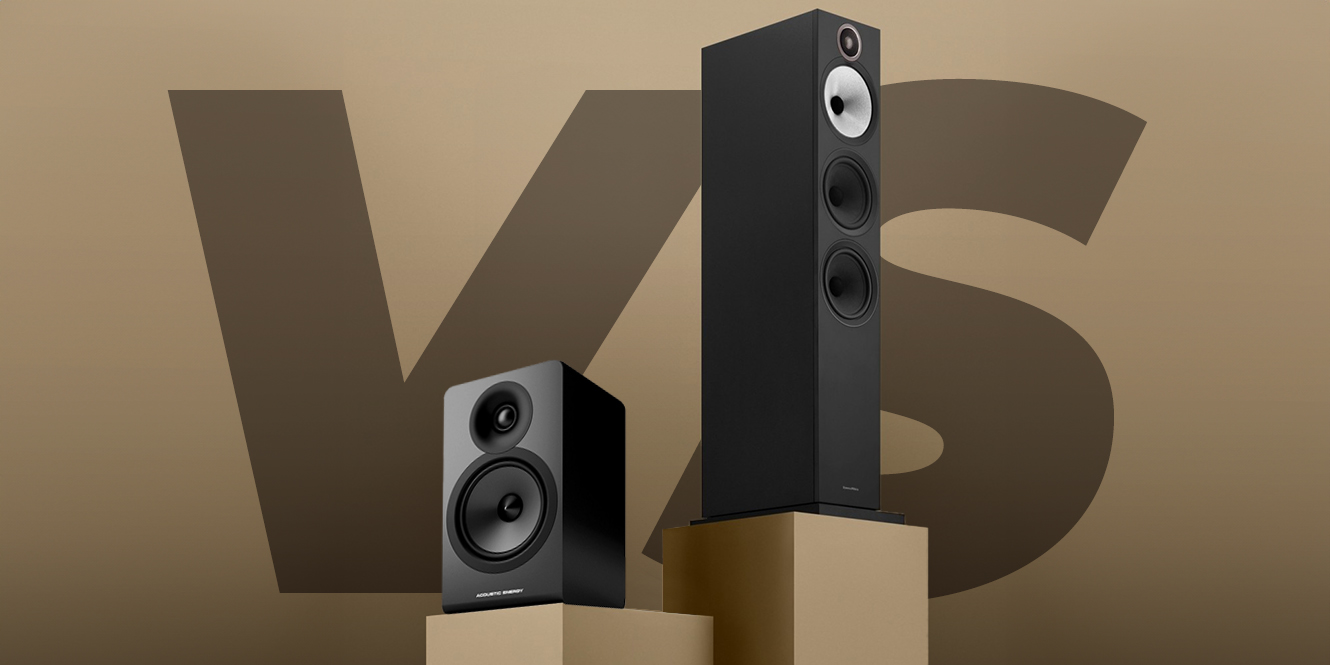

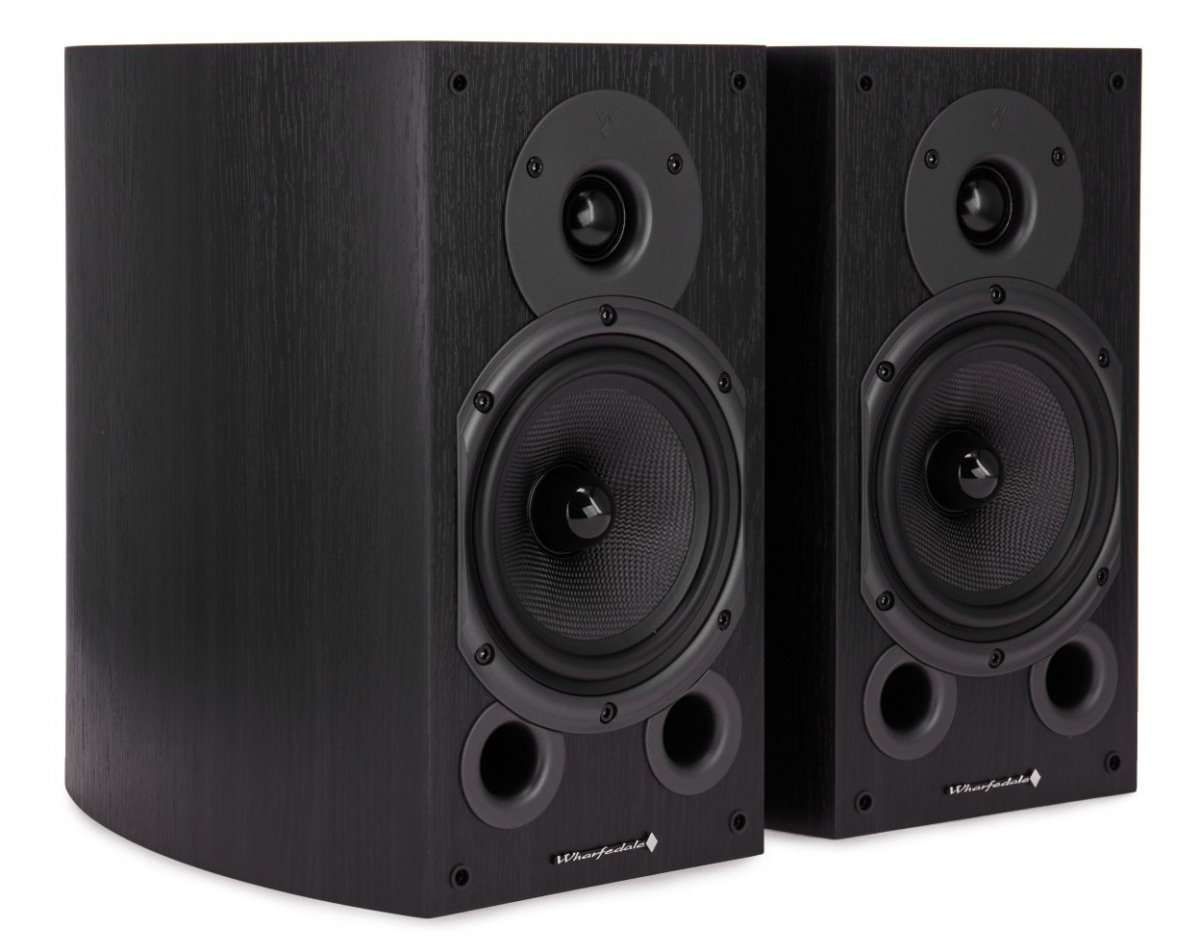
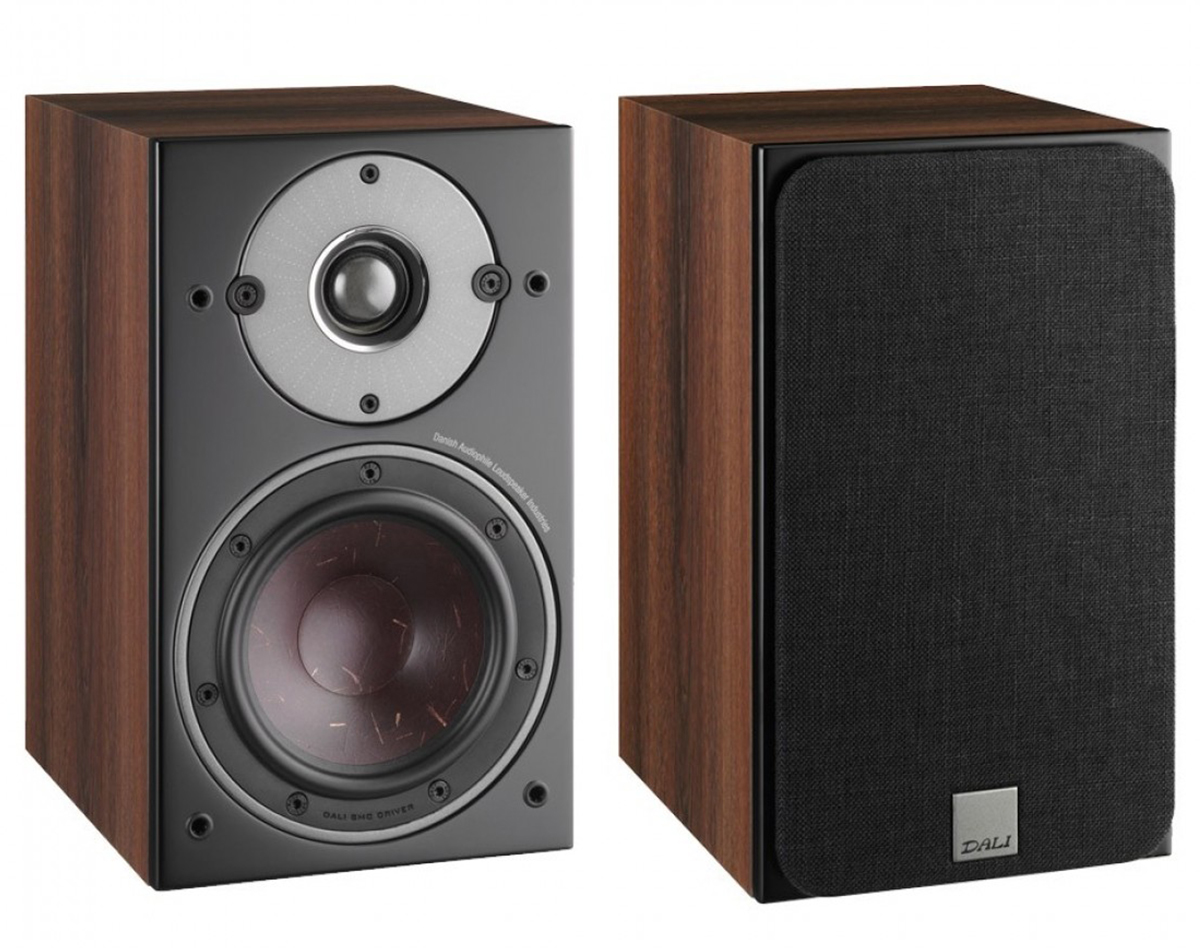
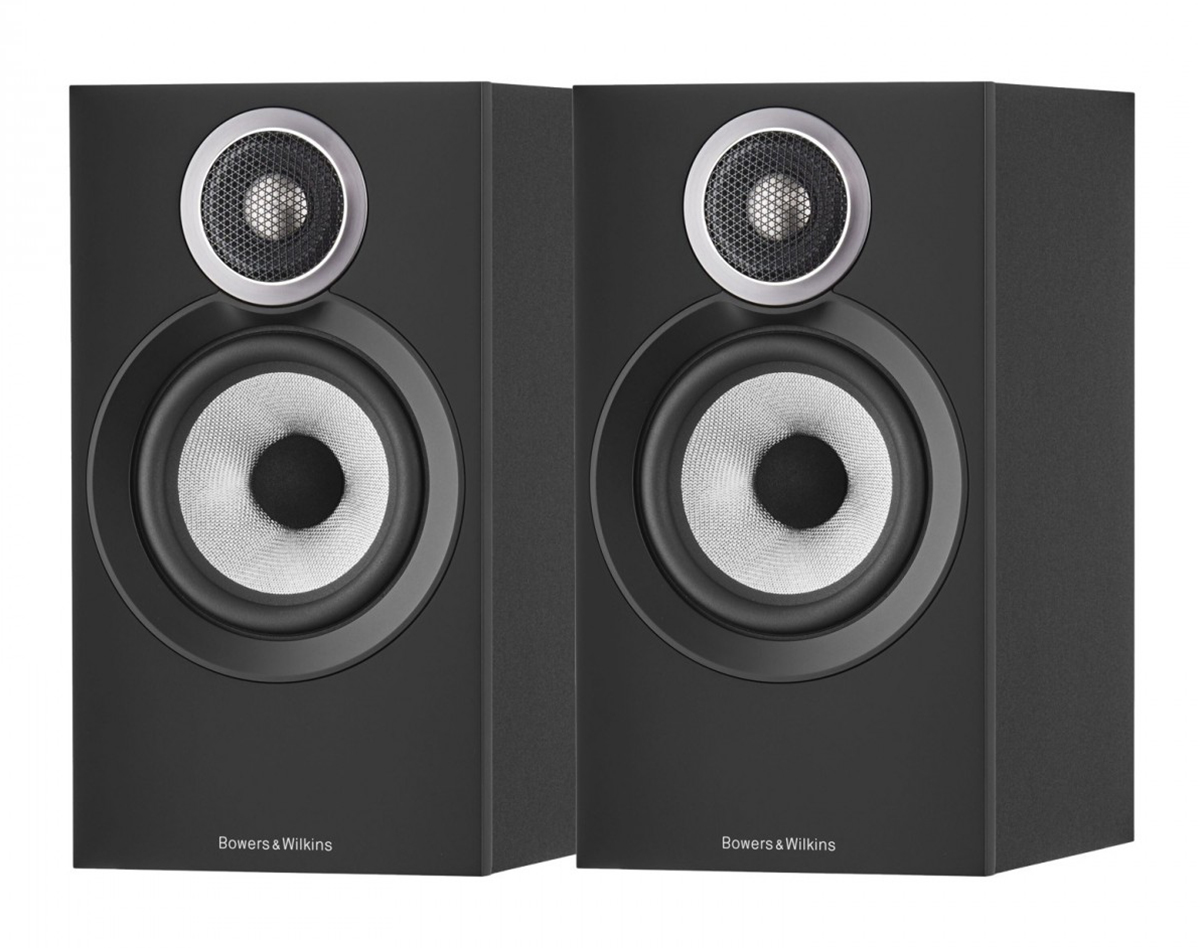
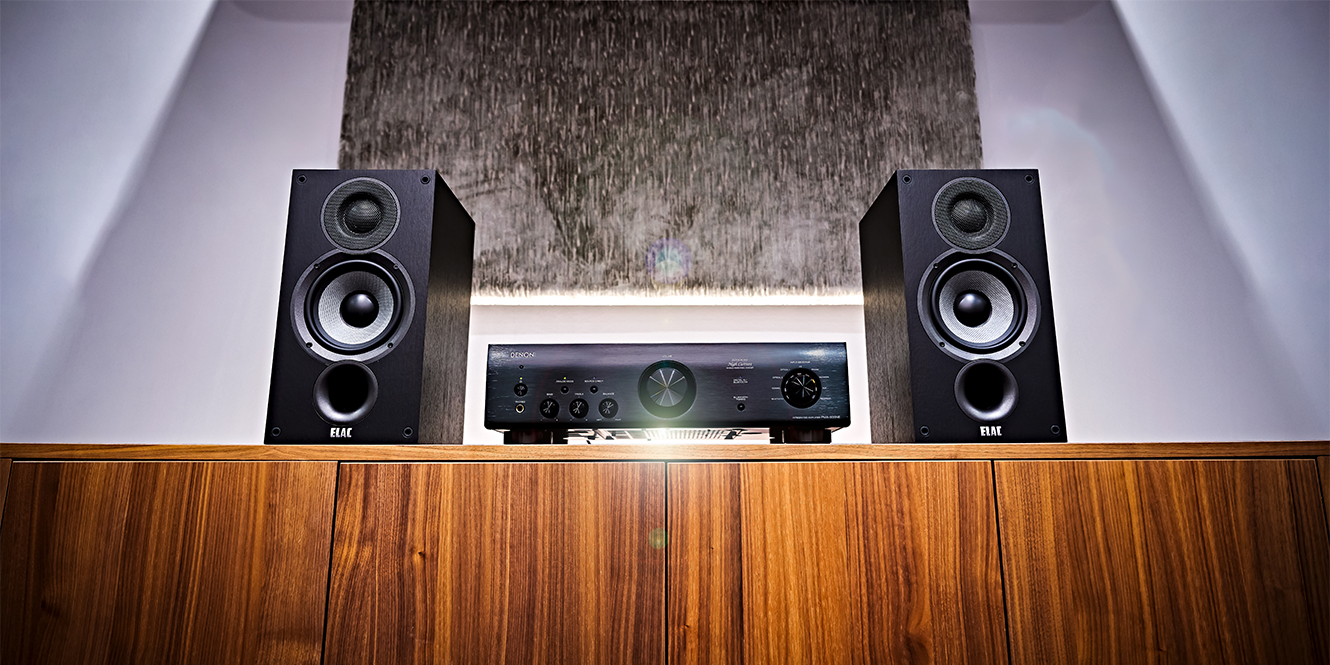

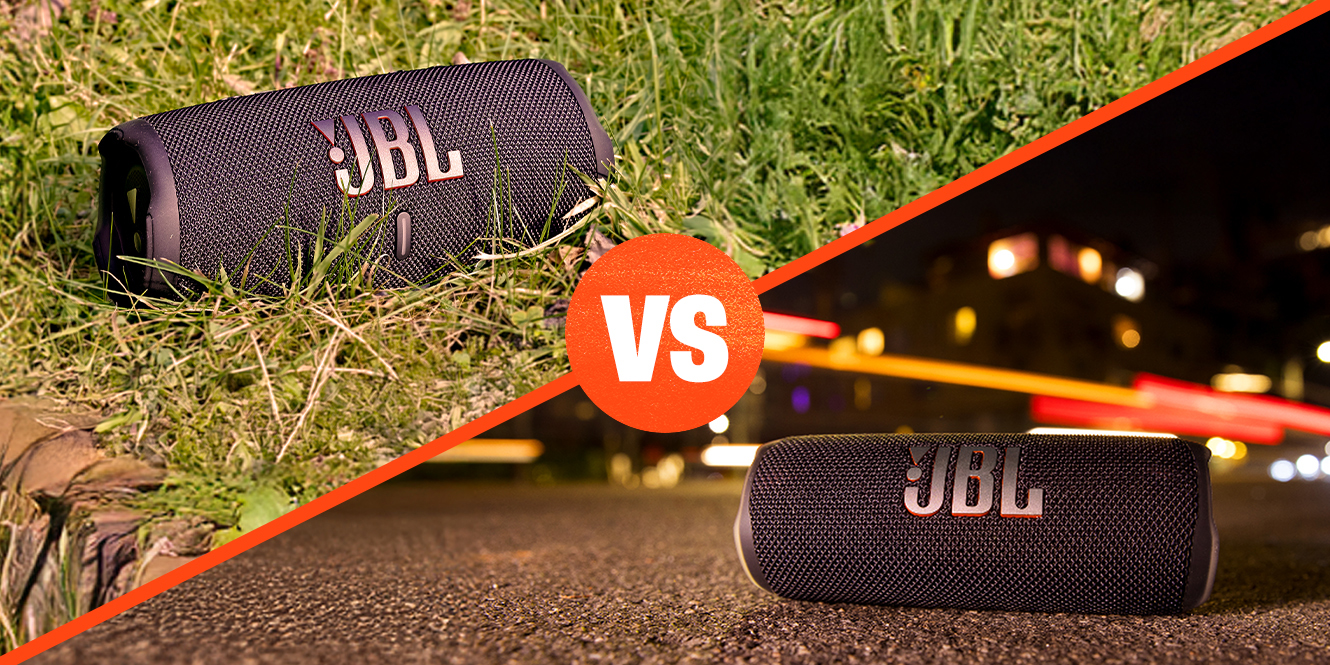
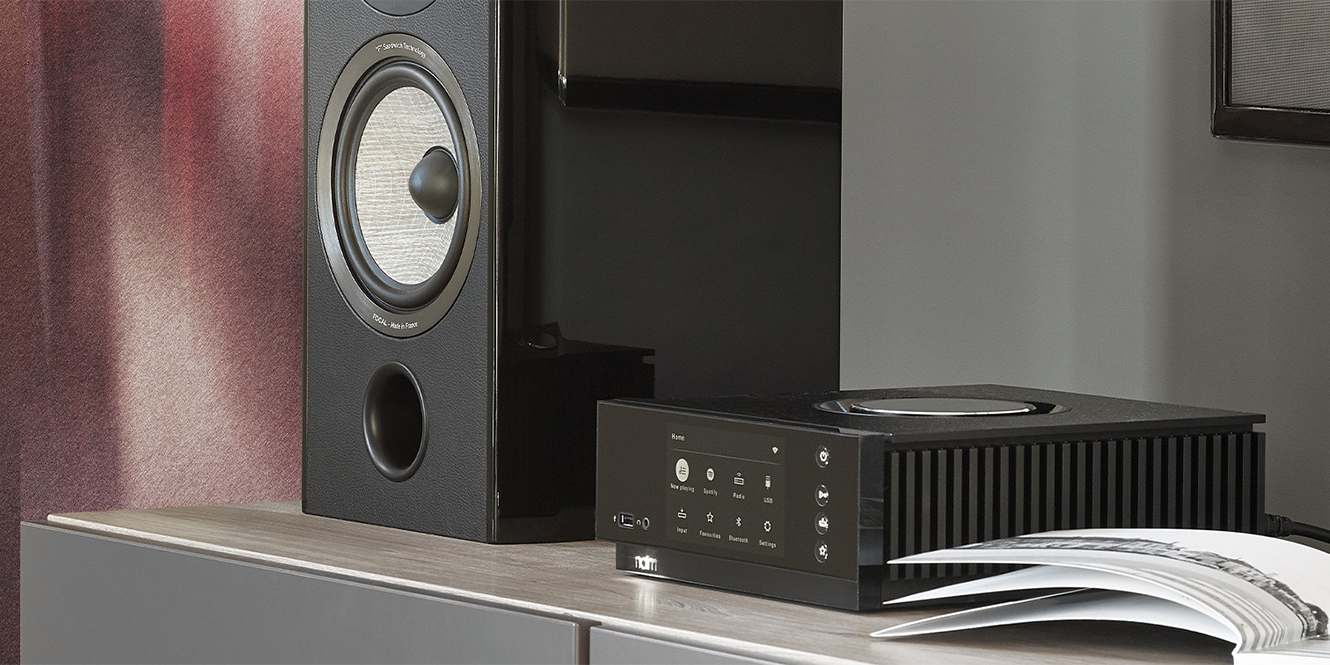
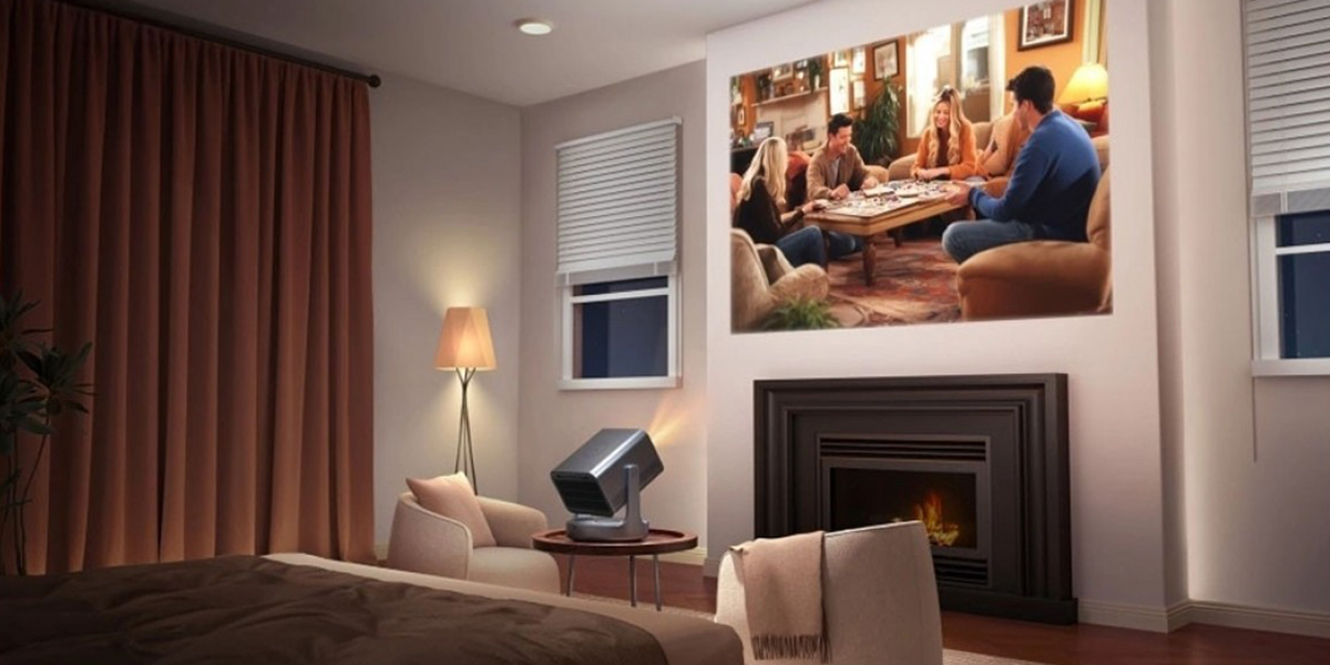





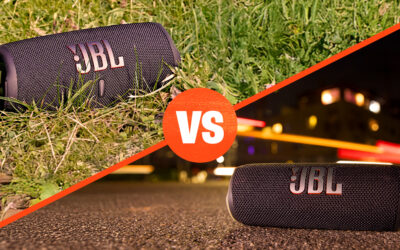
0 Comments